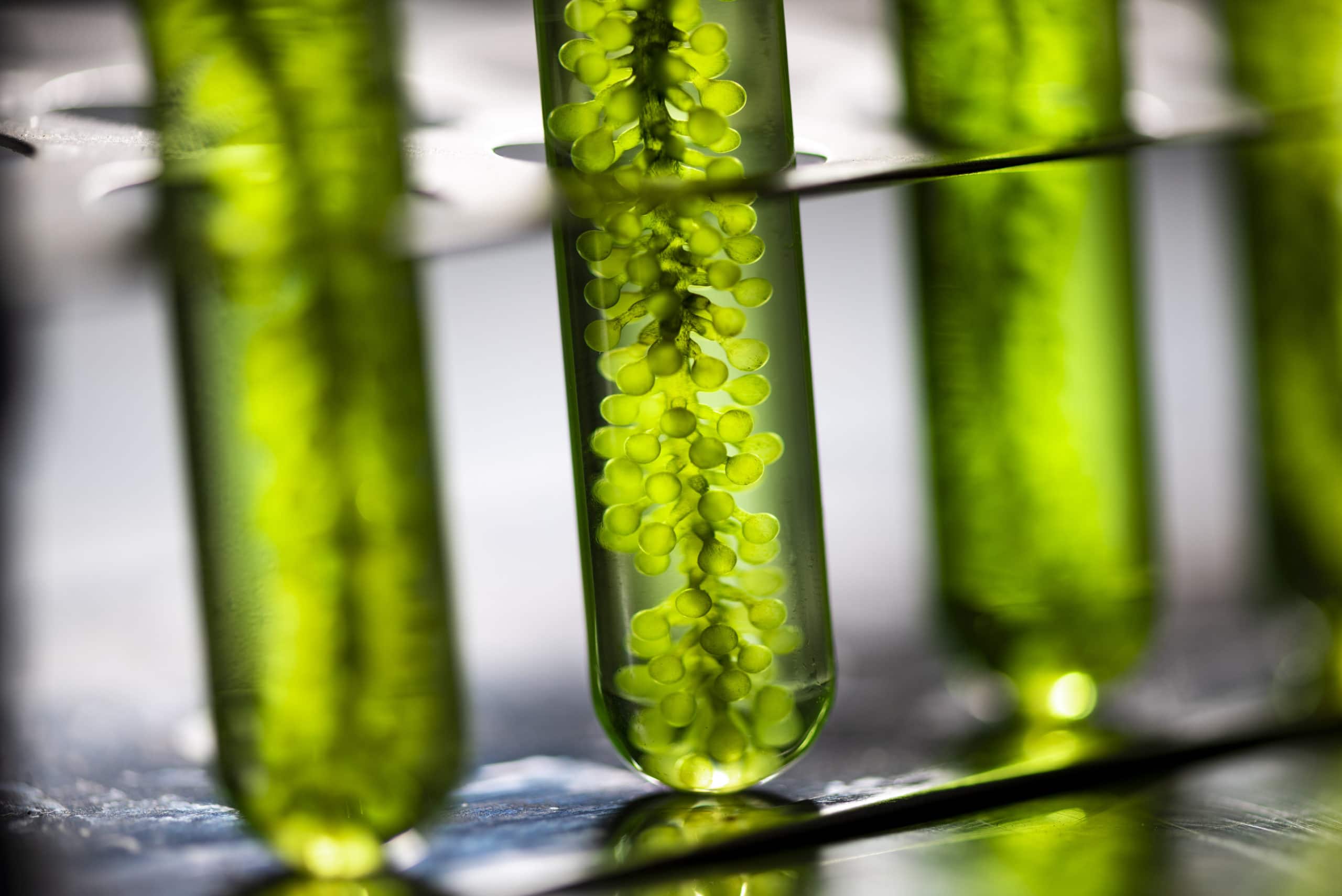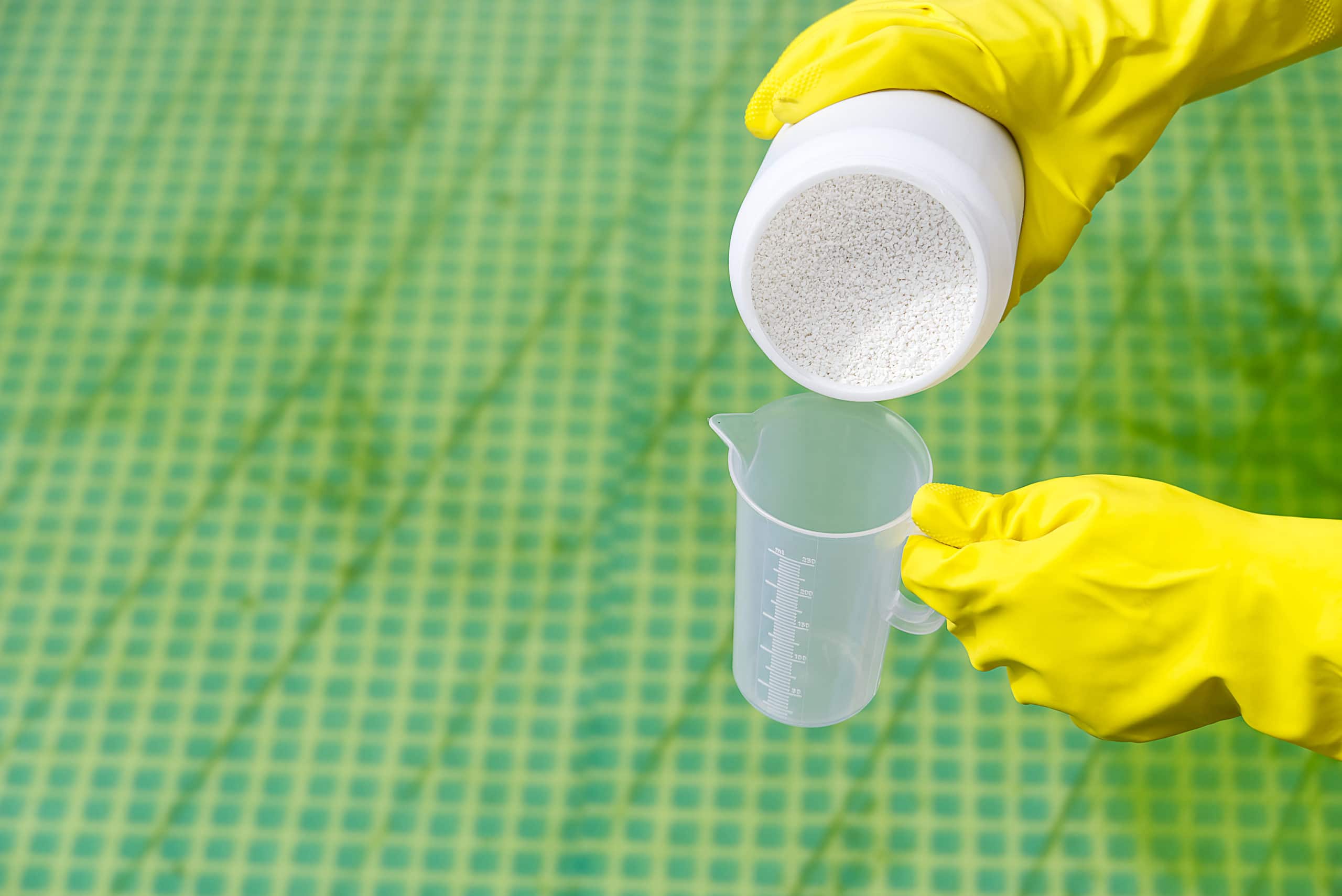You're looking to have some fun in this particularly hot day. You decide to go to your pool and have a dip but the water is green. What do you do?
Green pool water is caused by algae. It's what makes your pool have this unsightly green scum-look. If this ever happens to your pool, you don't have to worry that much. It may be an inconvenience but you can definitely solve this in no time. In this article, I'll tell you exactly how. I'll also include some proven tips on how to prevent this from happening again.
What Causes Green Water?
Pool algae is what makes your pool water appear green. Algae can cause problems for both in ground and above ground pools. Luckily, there are plenty of ways to solve this problem and reclaim your pool.

How It Happens
Algae spores can be blown into your pool water through the wind or rain . However, it can also come from your swimsuit or pool cleaning tools. Algae grows easily once in your pool because it reproduces through its own spores. It thrives especially if the water is out of balance and or has high pH level. So to avoid this, you should improve the water circulation, filtration and pool sanitation.
Algae also thrive in pools with lots of food source. A pool where there are usually a lot of swimmers will cause organic matters to build up. Also, if you have a lot of leaves or debris in your pool, these may trigger algae to flourish.
How to Get Rid of Pool Algae
Now that we have discussed how algae can form and the factors that make it possible to thrive in your pool. Let's now get into how you can get rid of algae. But first, here are some of the tools that you may need:
PRO TIP Before starting to put in the solutions, scrub the pool as much as possible. This loosens up a lot of the algae that’s clinging to the walls.
Step 1
Lower the pH Level
Checking and adjusting the pH level is very important because algae thrive in alkaline water. Lowering the pH will kill off algae, as well as unwanted bacteria and parasites.
If your water's pH is 7.6 and above, then it's a tell-tale sign that it's what caused the water to turn green. When your pH is low, or balanced, pool algae can’t easily repopulate.
To lower you pool's pH, use muriatic acid. Use about 1 quart per 10,000 gallons of water. After putting in the muriatic acid, wait a bit then retest the pH level. You should aim for a pH between 7.2 and 7.4.
Once, you've balanced the pH level of your pool, you may now proceed to actually killing the algae.
Step 2
Shock the Pool

In order to destroy pool algae, you have to shock it. "Shocking” refers to the process of adding chlorine or non-chlorine pool chemicals to the water in order to raise the "free chlorine” level.
The best way to get rid of pool algae is by shocking the water with chlorine. Adding chlorine will kill off the algae and other contaminants in your pool. In doing so, note that you must use the right amount. And the amount of chlorine to use depends on on the color of the pool algae.
The 4 main colors of pool algae are: Light green/teal, green, dark green, and black. Each one requires a different amount of chlorine to be defeated, with black algae being the strongest. Make sure to follow the manufacturer’s instructions for the particular amount.
- In general, what you want to do is introduce chlorine into your pool slowly, in controlled doses. This is the best way to shock the water and kill off all of the algae. To do this, fill a bucket with tap water (not chlorinated water). Add one cup of liquid chlorine shock or calcium hypochlorite for every 5,000 gallons of water in your pool. Mix this into the bucket slowly, stirring as you go to dissolve it completely.
- After adding chemicals to the pool water, run your pump for 30 minutes. You'll want to leave it running an extra 15 minutes after that as well. This will allow time for all of the ingredients in the chemical shock to mix with the water and disperse evenly throughout your entire pool.
- When you're done shocking, make sure you check the chlorine and pH levels of the pool water. If your chlorine level is below 1 ppm (parts per million), then you'll want to add more chlorine in small doses as needed until it reaches an acceptable level.
Step 3
Add Flocculant
Another solution to clean up the algae is by using flocculant. Flocculants are normally used to clear up cloudy white swimming pools. They work by clumping particles together and sinking them to the bottom of your pool — making it easier for you to clean up and filter out.
Use 1 – 2 treatments of pool flocculant depending on the severity of the pool algae. After adding it to your pool, give the flocculant some time to settle in. Once you see the algae sinking to the bottom, it’s time to finish the job.
Step 4
Vacuum the Pool
Grab your pool vacuum and begin vacuuming up and down your pool. The goal here is to suck up as much of the pool algae as possible. You might not get it all, but you’ll get most of it. The rest will filter out over the next day.
You should scrub the pool with your pool brush every week, even if you’re not having algae problems. This will prevent a lot of the debris from collecting and clogging up the filter and other parts of the filtration system. If you occasionally get scale or rust on your tiles, try rubbing them down with a metal grill brush.
Step 5
Add an Algaecide
The next thing to do is add an algaecide to prevent future algae growth. Now that the algae are almost eradicated. Let’s make sure it leaves for good..
From here, leave your filter running for the next 24-48 hours. This will allow time for all of the pool algae to get filtered out. Once it has, you can get back to enjoying a beautiful, clean swimming experience with no worries of having to deal with green water.
How to Prevent Green Water?
As mentioned algae spores are everywhere, thus if your pool is unprotected, then contamination can easily happen. However, to avoid these, here are some precautionary measures you can take up:
Vacuum Regularly
Keeping up with pool maintenance is pretty important to prevent algae contamination. Vacuuming your pool in particular will help removing the organic matter and debris that may have build up in your pool. As they will serve as food source for algae if not removed.
Clean Filter
Organic debris and sediments are not the only things that is being filtered, so is algae. This is why it’s important to clean out your filter regularly, I suggest doing it at least twice a month. This helps a lot.
Balance pH Level
The number one tip for preventing pool algae is keeping your water balanced. The better your water’s chemical balance, the harder it is for algae to take over. Balance and test your water regularly. Aim for the 7.4 – 7.6 range.
How long does it take for algae to contaminate your water? It can happen within hours, especially during hot summer months or periods of heavy rain. Essentially, the solution to this problem is simple, you just need to be religious with maintaining your pool.
Final Thoughts
As soon as you notice algae contamination, act on it fast. Get rid of it before it grows out of control. It's a lot easier to manage something small than a huge and thick contamination that'll be harder to remove.
If you follow the pool cleaning steps mentioned above, you'll get your pool back to looking and feeling great in just a few days. Hope these tips will help you keep your swimming pool clean and green(not literally).

